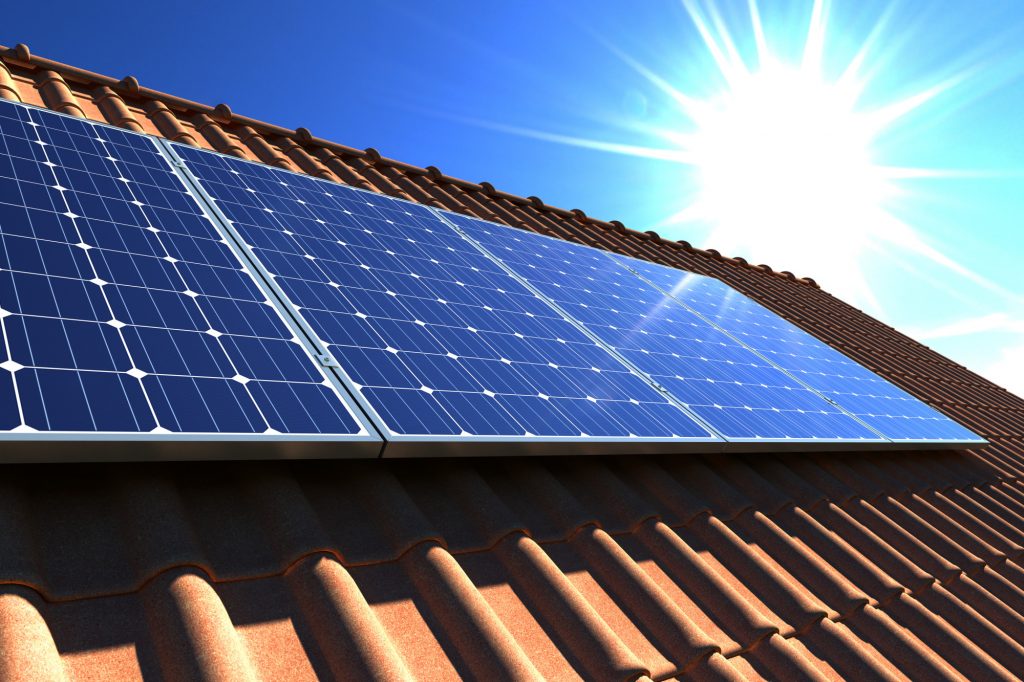The decision to go solar is an exciting step towards energy independence, reduced electricity bills, and a more sustainable lifestyle. However, solar panel installation is a significant project that requires careful planning and execution to ensure that your system performs optimally for years to come. To help you navigate the process smoothly, we’ve created the ultimate solar panel installation checklist for homeowners. By following this guide, you can be confident that your solar project will be successful, efficient, and hassle-free.
1. Assess Your Home’s Solar Potential
Before you dive into the installation process, it’s important to evaluate whether your home is suitable for solar panels. Not all rooftops are ideal for solar installations due to factors like shading, roof orientation, and the amount of sunlight your location receives.
- Roof orientation and pitch: In the Northern Hemisphere, south-facing roofs typically receive the most sunlight. The ideal roof pitch for solar panels is between 15 and 40 degrees. However, east- and west-facing roofs can also work well with slight reductions in efficiency.
- Shading: Large trees, nearby buildings, or other obstructions can cast shadows on your roof, reducing the efficiency of your solar panels. A professional solar installer can conduct a shading analysis to determine if your roof gets enough sunlight throughout the day.
- Roof condition: Solar panels typically last 25 to 30 years, so it’s essential to ensure that your roof is in good condition before installation. If your roof needs repairs or replacement, it’s best to handle these tasks before the solar installation to avoid additional costs later on.
2. Calculate Your Energy Needs
Understanding your household’s energy consumption is key to determining the size of the solar system you’ll need. Review your utility bills from the past 12 months to calculate your average energy usage in kilowatt-hours (kWh) per month.
- Determine your energy goals: Do you want to offset 100% of your energy usage with solar power, or are you looking to supplement a portion of your electricity needs? This decision will affect the size of your solar system.
- Future energy use: Consider whether your energy needs will increase in the future. If you plan to add electric vehicles or expand your home, you may want to install a larger solar system to accommodate these future needs.
3. Choose the Right Solar Panels and Equipment
There are various types of solar panels and components available, each with its own advantages and price points. Researching and selecting the right equipment for your needs is essential for long-term efficiency and cost savings.
- Types of solar panels: The most common types are monocrystalline, polycrystalline, and thin-film panels. Monocrystalline panels are known for their high efficiency and sleek design, while polycrystalline panels are more affordable but slightly less efficient. Thin-film panels are flexible and lightweight but generally have lower efficiency.
- Inverters: Solar inverters convert the direct current (DC) generated by the panels into alternating current (AC), which powers your home. You’ll need to choose between string inverters, microinverters, or power optimizers, depending on your system design.
- Battery storage: If you want to store excess energy for use during the night or power outages, consider adding a solar battery to your system. Batteries like the Tesla Powerwall or LG Chem can increase your energy independence and reduce reliance on the grid.
4. Research and Hire a Qualified Solar Installer
Finding the right solar installation company is crucial for the success of your project. Look for a reputable, licensed, and experienced installer who can handle all aspects of the installation process, from design to permitting and final inspections.
- Certifications and licenses: Verify that the company is certified by organizations such as the North American Board of Certified Energy Practitioners (NABCEP). A licensed contractor will ensure that the installation meets all safety and building codes.
- Experience and reviews: Research reviews and testimonials from previous customers to gauge the installer’s track record. A company with a proven history of successful installations will be more likely to deliver quality service.
- Local knowledge: Hiring a local installer familiar with your area’s weather conditions and building regulations can make a big difference. For example, if you’re based in Hawaii, a solar panel installation company Maui would have expertise in handling the tropical climate and ensuring compliance with Hawaii’s energy policies.
- Warranties: Inquire about the warranties offered on both the equipment and the installation itself. A reputable installer should provide warranties on both the solar panels (typically 20-25 years) and the labor (typically 5-10 years).
5. Obtain Necessary Permits and Approvals
Solar panel installations require various permits and approvals before work can begin. Your solar installer will typically handle the permit process, but it’s helpful to understand what’s involved.
- Building permits: Depending on your location, you may need a building permit for rooftop solar installation. Your installer will work with local authorities to ensure your system meets all structural and electrical codes.
- Homeowners’ Association (HOA) approval: If you live in a neighborhood governed by an HOA, you may need their approval before installing solar panels. While most HOAs cannot prohibit solar installations outright, they may have guidelines for panel placement or aesthetics.
- Utility approval: If you plan to connect your solar system to the grid, your utility company will need to approve the interconnection. This process involves submitting an application and receiving approval for net metering, which allows you to receive credits for excess energy you send back to the grid.
6. Schedule the Installation
Once all permits and approvals are in place, your installer will schedule the installation. The process typically takes one to three days, depending on the size and complexity of your system.
- Roof preparation: If necessary, your installer will reinforce your roof to ensure it can support the weight of the solar panels.
- Mounting the panels: Solar panels are mounted on a racking system that is secured to your roof. The racking system is critical for ensuring that the panels stay in place, even during extreme weather conditions.
- Electrical work: Your installer will connect the solar panels to the inverter and the electrical system in your home. This may involve upgrading your electrical panel or installing additional components like battery storage.
- System testing: After the panels are installed, your installer will test the system to ensure it’s functioning properly and that all connections are secure.
7. Inspection and Activation
After installation, your solar system must pass a series of inspections to ensure that it complies with local building codes and safety regulations.
- Final inspection: A representative from your local government or utility company will conduct a final inspection of the installation to verify that it meets all standards. Your installer will typically coordinate this process.
- System activation: Once the inspection is complete and your utility company has granted approval, your solar system will be connected to the grid and activated. At this point, you can start generating clean energy and enjoying lower electricity bills.
8. Monitor and Maintain Your Solar System
While solar panels require minimal maintenance, it’s important to monitor their performance regularly to ensure optimal energy production.
- Monitoring tools: Most modern solar systems come with monitoring software that allows you to track your energy production and consumption in real-time. This can help you identify any issues early and ensure that your system is performing as expected.
- Maintenance: Solar panels are generally low-maintenance, but they should be kept clean to maximize efficiency. Dust, dirt, and debris can accumulate on the panels over time, so occasional cleaning may be necessary, especially in areas with heavy rainfall or high winds.
- Repairs: If you notice a drop in energy production or any issues with your system, contact your installer for troubleshooting and repairs. Regular inspections by a professional can help prevent small problems from turning into major repairs.
Conclusion
Installing solar panels is a smart investment for homeowners looking to reduce their energy bills, increase their property value, and lower their carbon footprint. By following this ultimate solar panel installation checklist, you’ll ensure a smooth and successful process from start to finish.
Whether you’re based in Oahu or another sunny location, finding the right solar installer is key. If you’re in Hawaii, working with a reputable solar panel installation company Maui will ensure that your system is designed and installed to withstand the local climate and meet your energy needs. With the right planning and professional support, you can enjoy the benefits of clean, renewable energy for years to come.



